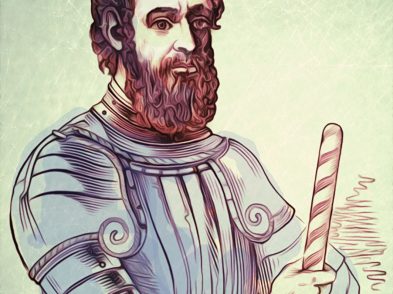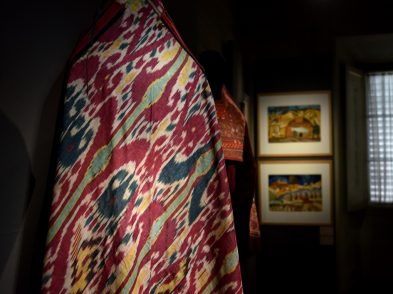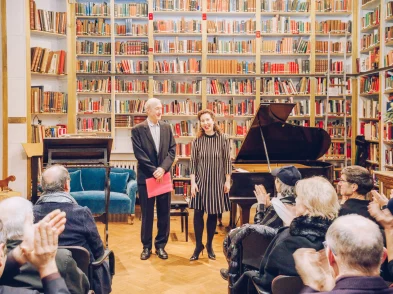The huge brown stone cube that presides over the Piazza della Signoria and whose tower figures so prominently in Florence’s skyline is equally imposing in the history of Florence. For nearly 700 years, the Palazzo Vecchio (‘Old Palace’) has been the place where civic affairs have been handled, decisions (and deals) made and visiting dignitaries welcomed. Florence’s city hall is as much a museum as it is a seat of civic government. With passageways that suggest intrigue and power struggles and the tantalizing possibility of a long-lost fresco by Leonardo da Vinci behind the walls, this city hall may have more secrets than most.
Completed in 1314, the gothic-style palazzo, in pietra forte, is an imposing symbol of the city government and its authority. Its bell, housed in a 308-foot tower added in 1310 before construction was completed, was used to warn citizens of danger and to call them to meetings. First known as the Palazzo dei Priori, after the priori, or heads of the commune, in the fifteenth century, because it was the residence of the signoria (city government), the name was changed to the Palazzo della Signoria. It was the Medici’s ducal palace of Cosimo I and his son Francesco I, from 1537 to 1587.
The building became the Palazzo Vecchio in the mid-sixteenth century to distinguish it from Cosimo’s new residence, the Palazzo Pitti. When Florence was the capital of Italy (1865–1871), the palazzo w
as home to the national parliament. Since 1872, it has housed the city council and, since 1998, the children’s museum, museo dei ragazzi.
The inner courtyard (1453) is filled with frescoes by Giorgio Vasari, celebrating the marriage of Francesco de’Medici (who originated the use of pietre dure in the making of mosaics) to Joanna of Austria 1565. Inside is the immense Salone dei Cinquecento (‘Room of the 500’), commissioned in 1495 by Savonarola as a meeting place for the 500 members of the parliament he appointed to the republic after the expulsion of the Medici (who returned to power in 1540). Initially decorated with drafts of frescoes by Michelangelo and Leonardo da Vinci, the wall panels were later frescoed over by Vasari. The walls tell stories about the Medici families and Florentine battles, and the room contains sculptures by Michelangelo and Giambologna.
Adjacent to the Salone is Francesco de’Medici’s tiny, precious, windowless studiolo (‘study’), also designed by Vasari. It is filled with secret cupboards containing glass, precious stones and coins, and the walls hold a collection of paintings and frescoes about the natural sciences,
a testimony to fine Florentine Mannerist decoration.
My two favorite rooms in the Palazzo Vecchio are the chapel of Cosimo’s wife, Eleonora di Toledo (elegant and secluded, decorated by Bronzino, with ornate biblical frescoes, some of his most important works) and the Sala d’Udienza, the Hall of Justice’s audience room of the priori (the six guild masters of the arts) with its gilded ceiling and sumptuously large walled frescoes by Mannerist painter Francesco Salviati, a student of the school of Raphael.
A tour of five secret passages (percorsi segreti) will take you ‘inside city hall’ and is great for all ages: Climb the stairway that the Duke of Athens built in 1342, inside the thin walls of the palazzo, so he could secretly leave the palace whenever he wanted. View the trusses, rafters and beams supporting the gilded ceiling of the Salone 500 designed by Vasari, and see how it keeps this imposing structure from caving in. Step inside the studiolo of Francesco I and the tesoretto of Cosimo I atop the studiolo, both filled with Medici treasures. Take the secret passage from the geographical map room to learn about the architecture of the palazzo. As a final treat, sit in a theater-like atmosphere where professional actors (and selected participants from the audience) don period costumes, and ‘Cosimo I’ and ‘Eleonora’ interact with the audience.
The secret passages tour
(1 hour 15 minutes)
Reservations necessary
Call to check tours and times and make reservations: 055/2768224
Maximum 12 people per tour
Fees: full, 9 euro; 2 adults, 17 euro; family (5 people max), 27 euro.








